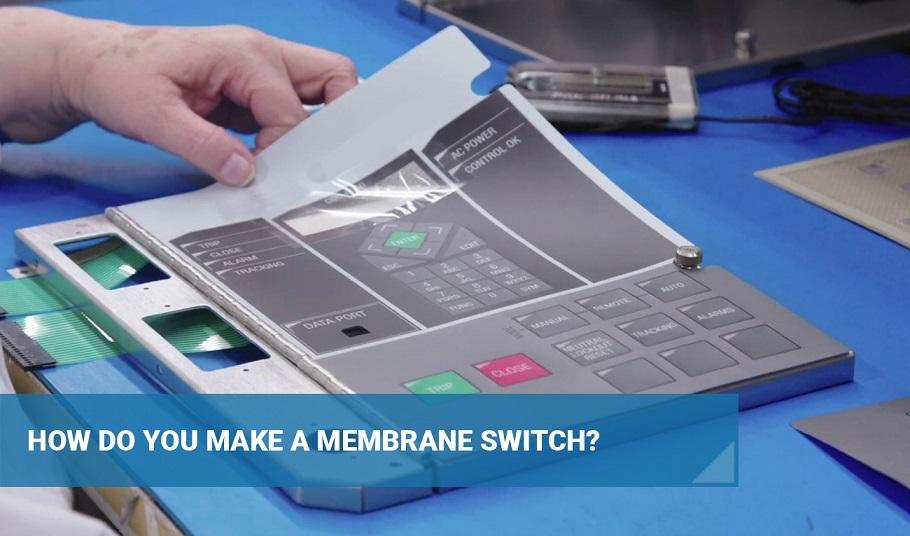How a Membrane Switch Boosts Individual Experience and Tool Effectiveness
How Membrane Layer Changes Add To the Toughness of Electronic Control Panels
Membrane layer switches play a critical duty in improving the durability of digital control panels, mainly via their multi-layered building which provides effective security against environmental aspects such as moisture and dirt. The lack of moving parts substantially lowers the likelihood of mechanical failures, making membrane changes perfect for demanding applications.
Interpretation of Membrane Switches

Membrane layer switches are made to be slim and lightweight, making them ideal for applications where space is limited. They can be manufactured in numerous forms, dimensions, and shades, supplying adaptability in layout that fulfills aesthetic and useful requirements. In addition, membrane layer buttons can integrate numerous modern technologies, such as tactile responses and LED indicators, enhancing user experience.
As a result of their construction, membrane layer buttons are frequently resistant to dirt, dampness, and basic wear, adding to their sturdiness in demanding settings. Their smooth style not only promotes easy cleaning however additionally reduces the threat of mechanical failing, making them a recommended choice for makers looking for dependable interface in their electronic control panels.
Defense Against Environmental Factors
The design of membrane switches naturally supplies a level of protection against numerous ecological factors, which is essential for preserving performance in difficult problems - Membrane Switch. These buttons are usually built with layers of adaptable materials that protect inner components from dampness, dust, and pollutants. By enveloping the wiring, membrane layer changes reduce the danger of brief circuits and rust, which can considerably impair efficiency
In addition, making use of durable adhesives and sealers throughout manufacturing enhances their resistance to ecological challenges. Membrane layer buttons can endure exposure to chemicals and solvents, making them ideal for sectors such as food handling and medical care, where hygiene and cleanliness are critical. Their seamless surface area design additionally prevents the accumulation of dust and germs, helping with simpler cleaning and maintenance.
Temperature level fluctuations are another environmental problem, and membrane layer buttons are crafted to function effectively throughout a wide variety of temperatures (Membrane Switch). This versatility makes certain that control panels stay functional in different setups, from industrial environments to consumer electronic devices
Influence On Individual Communication
User communication with electronic control board is dramatically affected by the style and performance of membrane buttons. These switches provide a tactile user interface that enhances the general user experience, enabling instinctive navigation and control. Their receptive nature guarantees that individuals obtain prompt comments upon activation, which is essential for jobs calling for accuracy and effectiveness.
Moreover, the smooth surface area of membrane switches assists in very easy cleaning and upkeep, promoting user self-confidence in the integrity of the interface. This sanitation is particularly essential in atmospheres where health is critical, such as medical or food handling setups. Furthermore, the small and lightweight design of membrane layer switches over contributes to the visual allure of control board, motivating user interaction through a modern-day and streamlined appearance.
Furthermore, the assimilation of visual components, such as published symbols and backlighting, assists users quickly determine features, lowering the finding out contour linked with new devices. Because of this, individuals can operate devices much more successfully, resulting in increased performance and satisfaction. In recap, membrane layer buttons play an essential function in enhancing individual communication by incorporating functionality, looks, and simplicity of use, eventually leading to enhanced functional performance.
Layout Flexibility and Modification
Layout adaptability and modification are essential elements of membrane buttons, enabling makers to tailor digital control panels to particular applications and individual demands. This adaptability allows for the combination of numerous style components, such as colors, graphics, and structures, which can enhance the aesthetic appeal and user interaction of the control panel.
Membrane layer buttons can be personalized in shapes and size, suiting a vast array of tools and applications, from commercial machinery to consumer electronic devices. This versatility makes certain that manufacturers can create intuitive user interfaces that line up with individual expectations and operational requirements. Additionally, the capability to include distinct functions such as backlighting or tactile feedback further enhances usability, allowing for a more interactive experience.
In addition, the production process for membrane switches over supports the rapid prototyping of layouts, allowing suppliers to repeat and fine-tune their concepts promptly. This ability not only speeds up the growth timeline but likewise guarantees that the end product satisfies details practical and visual standards.

Cost-Effectiveness and Durability
Cost-effectiveness and durability are substantial benefits of membrane switches, making them an eye-catching option for makers and end-users alike. These buttons are typically more economical to create than traditional mechanical buttons, largely as a result of their streamlined production procedures and click to find out more the minimized number of parts called for. This price benefit prolongs not just to initial manufacturing yet additionally to long-term functional expenditures, as membrane layer switches often require less maintenance and have a reduced failure price.
In addition, the longevity of membrane layer switches over adds to their overall worth. Constructed from long lasting materials, they are resistant to environmental elements such as dampness, dust, and chemicals, which can bring about visit site early wear in various other button types. The lack of relocating components minimizes mechanical failing, allowing membrane layer changes to maintain functionality over extended periods.
This resilience is specifically helpful in applications needing constant efficiency under requiring problems, such as clinical gadgets and industrial equipment. Ultimately, the combination of cost-effectiveness and longevity makes membrane switches a financially viable option for manufacturers, supplying dependable options that hold up against the test of time while maximizing budgetary factors to consider.
Final Thought
In verdict, membrane buttons dramatically enhance the toughness of electronic control panels through their durable construction and protective functions - Membrane Switch. In general, membrane switches represent a dependable and economical selection for boosting the long life and performance navigate to this website of digital control systems.